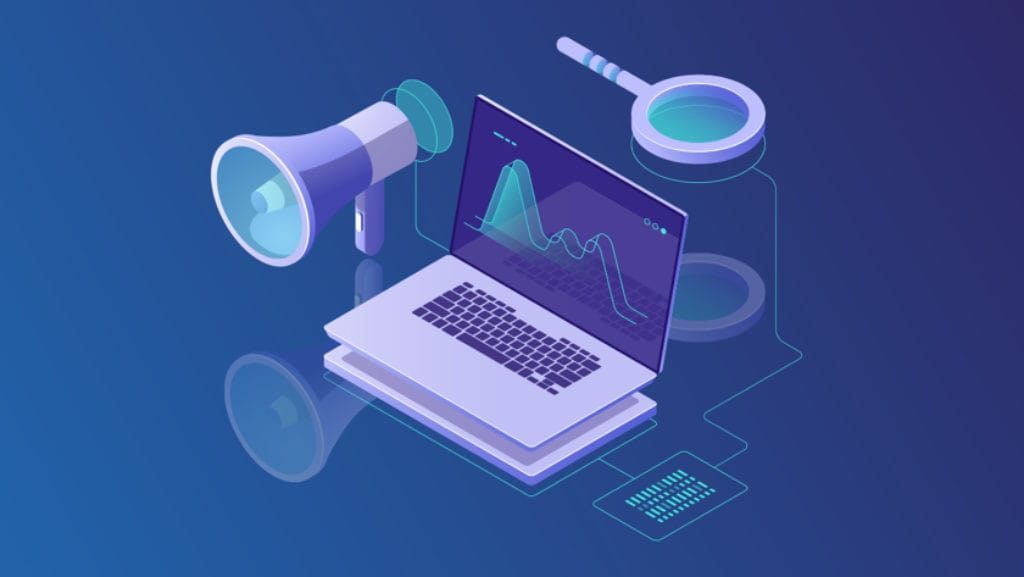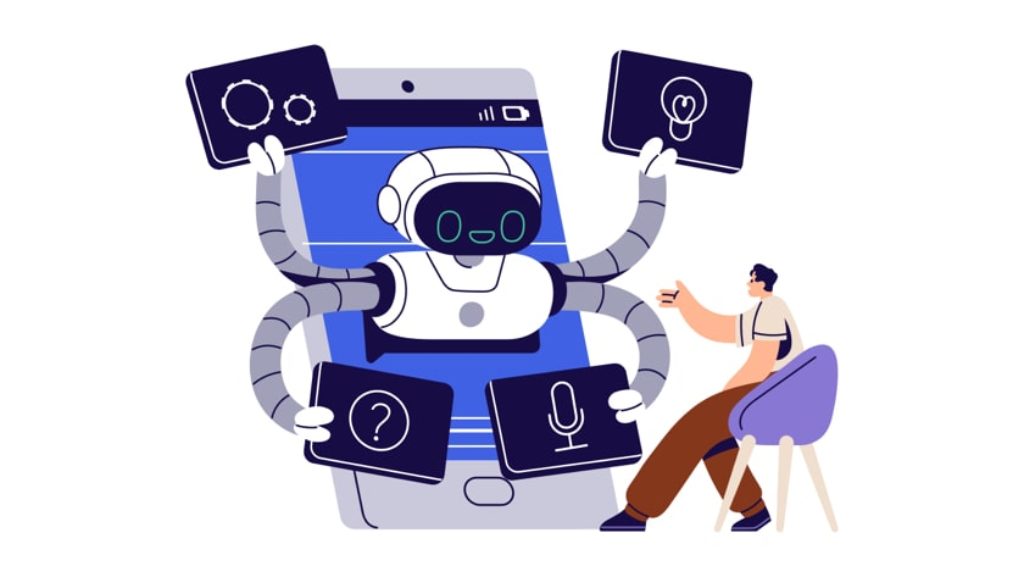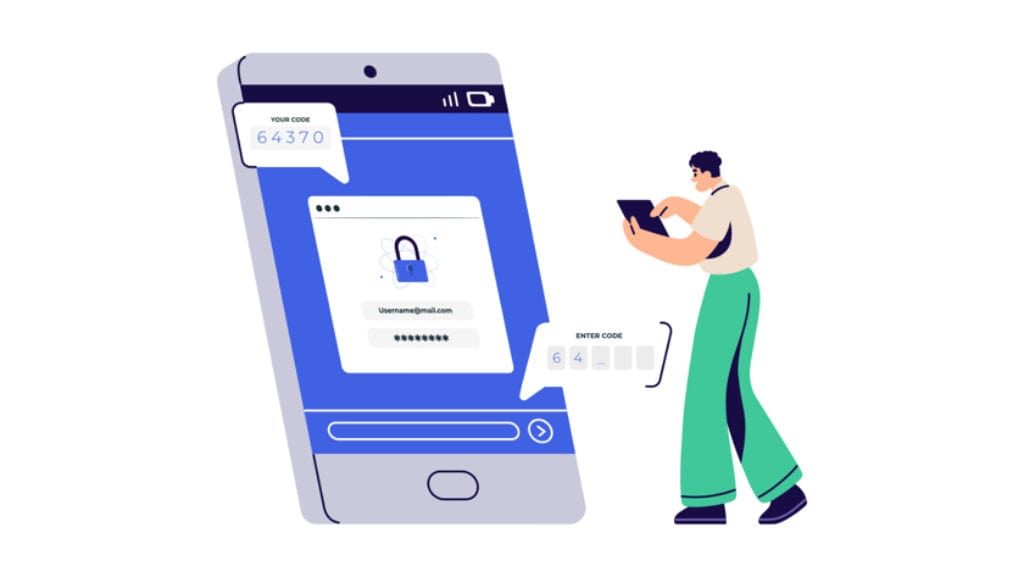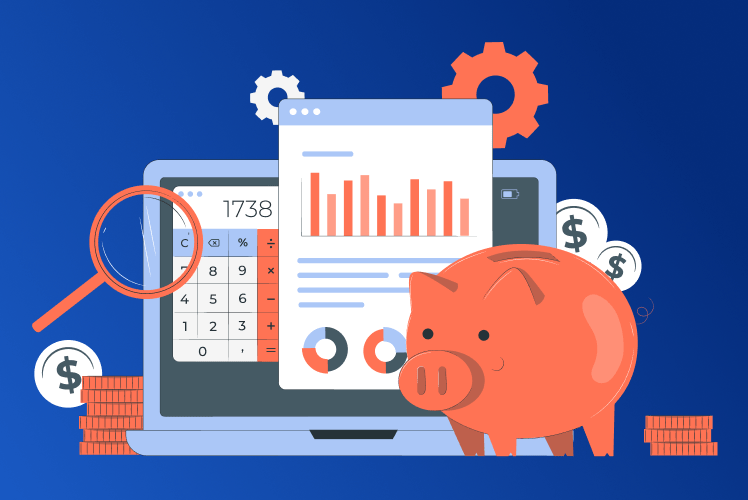Table of Contents
At SoftTeco, we believe that in order to offer our clients the most relevant and efficient solutions, we need to constantly keep a finger on the pulse and monitor the latest technology trends. As a software provider that strives for innovation, we need to be aware of all changes that happen in the software world around us and to adapt correspondingly.
Hence, we invite you to take a look at an overview of our report on the main technology trends 2022. We hope you will find it insightful and it will help you shape your future software projects right (and make the right choice of a tech stack too!).

Programming languages
Because there is a huge variety of programming languages and each is most suitable for specific use cases, we can’t really talk about some general trends. What we noticed though is a shift in the popularity of Python. If in 2021, C and Java were the most popular programming languages, in 2022, Python came in top place with 14.26% ratings on the TIOBE index. C and Java remained in the second and third places, correspondingly, with C++ and C# following them.
If we look at the report by Stack Overflow, it’s an interesting finding that top-3 most wanted languages are Python (duh), TypeScript (that outdid Clojure), and JavaScript. Another report by LinkedIn states that most in-demand languages for 2022 are once again Python, Java, and Javascript.
Web development
Before dissecting the biggest web development trends, let’s look at a fun fact: Angular and Vue go head to head as per the number of downloads, according to the report by npm trends. Considering the fact that these two frameworks are the biggest rivals in the area of front-end development, their equal popularity is definitely an interesting trend to observe.
Top web development trends
On one hand, web development remains relatively stable as it’s really hard to come up with an astonishing innovation today. On the other hand, as technology advances, web developers get new opportunities to experiment with. Here are the top expected trends in the sphere of web development for 2022:
- Dark mode: in 2022, users will still be loving the dark mode of their devices. This design feature has several benefits: it’s more comfortable for the eyes (especially for those sensitive to bright light) and it reduces power consumption.
- AI and chatbots: smart chatbots have proven to be of great assistance when it comes to customer service. This year, they’ll remain in high demand due to their ability to boost customer satisfaction and provide an exceptional user experience.
- Motion UI: creative and animated interfaces continue to be in demand as users expect the design of software products to be highly engaging and attractive.
- Voice search: according to a report by Google, 25% of users use voice search on their mobile devices and the market of smart speakers might reach $27.16 milliard by 2026.
Progressive web applications
Progressive web applications, known as PWAs, made their first entrance to the web development arena in 2015 and since then, they’ve remained in the market. While some have claimed that PWAs are no longer relevant, statistics show the opposite. In fact, the financial cost of the PWA market will reach $10.77 billion by 2027, with e-commerce being the most interested in PWA adoption.
Mobile development
Statista estimates the number of mobile app downloads to be approximately 13 billion in 2022 and the number is expected to reach 187 billion by 2025. Quite impressive, isn’t it? And here are a few more interesting predictions on mobile development for the near future:
- 5G is expected to significantly rise by 2025, especially in China.
- App developers should consider adapting their apps for foldable devices as Statista expects 50 million units to be shipped in 2022.
- Food and grocery delivery apps have become the most popular in 2021-2022 due to the impact of the pandemic and self-isolation.
- P2P apps are gaining traction and are expected to reach $612,23 billion in transaction value in 2023.

iOS
Apple continues to strive for innovation and the upcoming trends only prove that. Here are the biggest iOS innovations to watch out for in 2022:
- Swift 6: it’s not yet clear when the Swift 6 version will be released but developers can expect much better concurrency support, memory ownership, and an overall improved developer experience.
- Increased use of wearables and IoT: it is expected that this year, Apple will expand its HomeKit potential and will focus even more on smart and connected wearables and IoT devices.
- Core ML 2 framework: though the second version of the Core ML framework was released back in 2018, Apple continues to work on it and places high hopes on its wider adoption and use in 2022 and further.
- ARKit 5: this framework helps bring Augmented Reality to iOS apps and in 2021, Apple added several new features to it, including enhanced location anchors, app clip codes integration, extended face tracking support, and improved motion capture.
Android
Being the biggest rival of iOS, Android keeps up with innovation and also has several aces up its sleeve regarding app development and user experience. The biggest trends to expect this year are:
- Android App Bundle: this app publishing format became mandatory in August 2021 and it helps significantly reduce the app’s download size.
- MotionLayout: considering the fact that Motion UI is on the rise, it comes as no surprise that Android MotionLayout will also be in demand.
- Kotlin Multiplatform: despite Flutter’s rising popularity, Kotlin Multiplatform is also seen as a bright future of Android app development and thus, Kotlin is the recommended language of choice for all Android devs out there.
- Hilt: this dependency injection library was specifically designed for Android and Google puts high hopes on it due to its functionality.
.NET
Another big part of our report on top technology trends 2022 is .NET. Since.NET is one of the biggest and oldest SoftTeco departments, we couldn’t miss the innovations happening within this field of software development. For instance, ASP.NET Core will become the prominent web development framework, according to the Stack Overflow report. Another interesting fact related to .NET is the growing use of .NET Core by serverless computing (with serverless computing being another tech trend for the near future).
MAUI Preview 12
.NET is a backend tool that’s used to create both mobile and web applications. With .NET Multi-platform App UI, developers can create native apps for iOS, Android, Windows, and macOS from a single shared codebase with the help of XAML and C#. No need to say, the Preview 12 version of .NET MAUI is highly anticipated.
The most highlighted features of MAUI Preview 12 are:
- Enhanced navigation in Shell;
- New documentation for App icons, App lifecycle, Brushes, Controls, and Single Project;
- Added Z Index property;
- Improved Android performance;
- Android Flyout Page handler added;
- Windows Fluent Design Title Bar.
Blazor
Blazor is a client-side UI framework released in 2018 by Microsoft. Blazor is considered the direct competitor of Angular since it’s an open-source web framework used for creating rich and reusable web UI. The biggest thing to know about Blazor is that it uses HTML, CSS, and C# instead of JavaScript and many developers seem to be really happy about that.
There are two development possibilities, Blazor Server and Blazor Web Assembly, and there are also three more models that were announced (but not released yet): PWA. Hybrid, and Native. The most interesting Blazor features are:
- Shared server-side and client-side code;
- Support by the Visual Studio Code;
- Dependency injection which allows inversion of control;
- JavaScript Interop for DOM manipulations.
If we compare Blazor and Angular, these frameworks are honestly the same in terms of code reusability, documentation, rendering, and data binding. The only thing about Blazor is that it’s relatively new (2018 release vs 2014 of Angular) and its community is still growing. However, Microsoft puts high hopes on Blazor in the future and many developers are excited to see what will come out of it.
Databases
According to Expert Market Research, the global market for database management systems will reach approximately $125,6 milliard by 2026. As for the most popular database management systems, the top three are Oracle, MySQL, and Microsoft SQL Server, with PostgreSQL and MongoDB following them.
There are also several interesting database trends to observe this year:
- Cloud-based DBMS: experts predict that more data storage system vendors will switch to cloud-like on-demand elastic pricing in order to efficiently compete with cloud storage providers. The on-demand elastic pricing proved to be a win-win for both customers and vendors and will most probably turn into a big trend.
- AI & ML: we can definitely expect to see more of AI and ML in data management activities, such as data identification and categorization. No need to remind you that the use of Artificial Intelligence can greatly boost the accuracy and speed of processes and database management is no exception.
- Open-source databases: Gartner predicts that this year, more than 70% of new in-house applications will be created with the use of open-source database management systems or cloud-based database management platforms as a service.
Artificial Intelligence and Machine Learning
In 2021, SoftTeco opened a Machine Learning and Data Science department so we are naturally interested in the latest technology trends within the field. Before looking at several biggest ones, let’s look at some general facts first.
Python remains the number one programming language for Machine Learning with 57% of data scientists and ML developers using it. It is closely followed by C++, R, Java, and Julia. As for the most popular ML libraries and frameworks, the top three are Scikit Learn, PyTorch, and TensorFlow.
It’s also worth looking at the global AI revenue forecast ($ millions) as per Statista:
- Static image recognition, classification, and tagging: 8,097;
- Algorithmic trading strategy performance management: 7,540;
- Efficient and scalable processing of patient data: 7,366;
- Predictive maintenance: 4,680;
- Object identification, detection, classification, tracking: 4,201.
In general, Artificial Intelligence is now an incredibly hot topic. More and more companies are rapidly adopting AI to improve their services: a 2021 report by McKinsey states that 57% of companies are using AI in at least one business function. In 2020, the number of companies using AI was 45% only. Gartner predicts that by 2025, 70% of companies will have operationalized AI architectures and in general, spendings on AI implementation are expected to grow by approximately $204 billion in 2025.
Language modeling with GPT-3 and GPT-4
In 2020, OpenAI (a San Francisco-based AI research laboratory) released GPT-3 which stands for Generative Pre-trained Transformer 3. This autoregressive language model deploys deep learning to produce human-like text and is comprised of 175 billion parameters (GPT-2, in comparison, comprises only 1.5 billion). The most popular use cases for such models are email generation, website building, chatboxes, and basically everything that involves creating copy. Should writers be worried? Probably.

Now, it’s interesting how quickly OpenAI has been releasing new versions of GPT: the first one was rolled out in 2018, GPT-2 was launched in 2019, and GPT-3, as already stated, in 2020. So it’s kind of safe to assume that GPT-4 will be coming into play in early 2023.
During his Q&A session at an AC10 online meetup, Sam Altman (CEO of OpenAI) spoke about GPT-4 and what we might expect from it. The main takeaways are that the new GPT version will not be much bigger than GPT-3 by the number of parameters. However, GPT-4 is planned to use more compute resources and will be focusing more on coding. One more interesting thing that OpenAI works on is how to train smaller AI models to deliver accurate results and resolve complex problems. While it’s a well-known fact that a big AI model equals higher accuracy, some research groups prove the opposite. So training of smaller models has become a point of interest for OpenAI researchers and something to work on in the future.
Natural language processing (NLP)
Last year, data was at the center of attention and companies placed a special focus on unstructured data. Unstructured data is data that has not yet been processed in order to be stored in a relational database and examples of such data are emails, social media posts, or rich media.
Considering the fact that IDC expects the volume of unstructured data to form about 80% of all the data by 2025, it’s natural that companies are looking for efficient ways to structure and understand this data in order to gain valuable insights from it. This is where natural language processing comes into play.
Researchers at Expert.ai predict that NLP will become one of the hottest AI-related trends in 2022 and that this year will be the year of natural language-enabled enterprises. That means enterprises will either consider or adopt an NL-based strategy in order to make the most out of available unstructured data.
Low-code and no-code AI
One more interesting trend to mention in the report on top technology trends 2022 is low-code programming. In the last few years, low-code and no-code development have become incredibly popular. These development methods imply using user-friendly platforms with a drag-and-drop interface to create software products and yes, these tools can help you build an AI model.
Now, the demand for AI is insanely high today but there are simply not enough specialists: according to the report by Forbes, 83% of companies consider AI to be their strategic priority but state there are not enough data science talents. As well, hiring an AI professional may be too expensive for a company and thus, a low-code AI platform may become a good alternative. In this way, a business gets a chance to optimize its processes with Artificial Intelligence while saving costs and adopting an AI solution in a quick manner.
It’s interesting though that no-code AI is still less popular than people’s interest in learning Machine Learning and AI in general, according to Google Trends. So it’s safe to assume that no-code AI will not replace data scientists and AI professionals for at least a good while.
Cybersecurity
Cybersecurity has always remained a hot issue and now, in the era of the pandemic, it became especially acute. For instance, a report by Cybersecurity Ventures states that global cybercrime costs will reach approximately $ 10.5 trillion by 2025 (compared to $3 trillion in 2015). As for the cost of cyber attacks, the average breach cost due to compromised credentials was $ 4.37 million, according to the report by IBM.
With these numbers in mind, let’s have a look at what’s trending in the world of cybersecurity and what to pay attention to if you want to keep your software safe.
Zero-trust approach
The zero-trust approach is one of the biggest cybersecurity trends for 2022 and there is a good reason for that. Companies that applied a zero-trust approach experienced $ 1.76 million less of the average cost of a breach, and we can all agree that the number is quite impressive.

Unlike a traditional approach towards user authentication and verification, the zero-trust approach implies trusting nobody. With that said, here are the main principles of this approach:
- Least privilege: users have only as much access as they need and this access is granted through managed user permissions.
- Continuous validation: since attackers can be both outside and inside the network, no one can be trusted. Hence, all users and all machines are to be regularly monitored and re-validated.
- Control of device access: there is a certain number of devices that can access the network and all devices are carefully monitored and checked.
- Microsegmentation: security perimeters are segmented into small zones so that separate parts of the network require separate access.
Yes, a zero-trust approach towards security sounds rather mundane – but it’s better to invest in it once than deal with massive financial losses in the future in case of a breach happening.
5 biggest cyber threats
Another important thing for organizations to remember is what cyber threats are expected to be the biggest ones in 2022. We’ve written an article on the issue so please see it for a detailed explanation. For now, here is a quick overview:
- Ransomware: an attacker encrypts victim’s files and then demands a fee to give access to the files back;
- DDoS: an attacker overfloods one’s website with traffic and makes it stop working;
- Phishing: an attacker sends malicious emails with an aim to make a user click the link and disclose sensitive information;
- MITM: an attacker steals sensitive information by inserting himself “between” a sender and a receiver of this information.
- Trojans: an attacker disguises malware as legitimate software to trick a user.
Of course, these are not all possible threats and vulnerabilities to watch out for – we highly recommend checking the official OWASP Top 10 documentation to learn about the biggest risk areas and how to mitigate them.
Evolution of threats
As if the existing threats were not enough, the bad news is – they keep evolving. So in 2022 and on, companies need to review their cybersecurity strategies and adapt them to the changing nature of cyber threats.
Examples of such evolution are triple extortion ransomware, spear phishing and whaling, and new DDoS attack types. As technology advances, so do cyberattacks and hence, companies need to remain alert and take preventive measures to detect risks at the earliest stage.
Employee security training
One of the best ways to prevent and mitigate cybersecurity risks is employee security training and in the last few years, companies began to invest heavily in it. A report by Cybersecurity Ventures states that the global spending on security awareness training will reach $10 billion in 2027. A fun fact: a few years ago, security training was the most underspent budget item regarding cybersecurity (and look where it is now!). So if you have not yet considered implementing security training in your organization, now it’s probably time to do so.
Final thoughts on top technology trends 2022
As you can see, all areas of software development undergo certain changes, which are mostly aimed at the convenience of development, security, and great user experience. We hope you enjoyed our report and we highly recommend adopting certain trends (especially related to cybersecurity) as their early adoption may result in highly beneficial results in the long run.



Comments